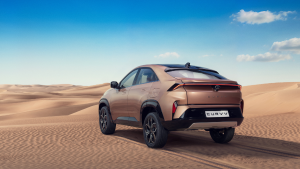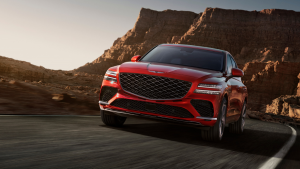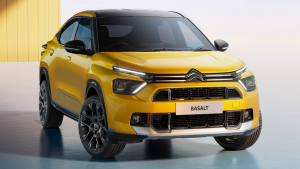2013 Porsche 911 Carrera 4S in India road test
When Matthias Mueller, CEO of Porsche AG drove out from backstage in a 1963 Porsche 911 at the VW group night in Geneva to announce the launch of the new 911 GT3 he made a powerful statement. The 911 since its inception 50 years ago has been one of the most distinctive shapes in the history of motoring. But of even more significance is the fact that the 911 has for those fifty years perfectly blended everyday commuting to supercar performance. It's very important to understand that the 911 which is Porsche's flagship sportscar is also one of their most usable cars. So while this icon has consistently collected medals at racetracks around the world it is also very happily used by white collar executives the world over.
Over the years the 911 has constantly kept pace with the times, but it never lost its purity. The rear engined, rear wheel drive 911 is definitely a thing of desire.

Every time, I think of a fun, rear-wheel driven sportscar it's the legendary Porsche 911 that comes to my mind. Its a wish list item not just for me but for any car enthusiast around the world. The 911 is light, agile and handles like a dream. Fast forward to today's digital age and you can see most supercars going hybrid and even featuring advanced electronically controlled all-wheel drive in the quest to develop more power and better traction. Porsche beliefs arent any different and after rolling out the sixth generation 911 last year, the guys at Stuttgart launched the Carrera 4S, Porsche's all-wheel drive 911 making it a sharper handling sports car with even better performance. But does drive to the front and rear wheels still make the 911 a purist's dream?
STYLING
Those familiar with the 911 will recognise it almost anywhere. Those who are new to the brand will simply stop and admire what is one of the most unique designs in the whole world. It is one of the most untraditional looking sportscars there is and back in the 60s it was definitely appreciated for way it drove rather than the way it looked. Yet Porsche has steadfastly maintained the characteristic design, dinner plate sized headlamps at the head of the pontoon shaped fenders, a front end narrower than the rear and the coupe like roofline. Successive generations have always had subtle changes and looked very similar to the previous model but no one complains about that anymore. So while the current 991 series is an all-new design and shares nothing with the previous 997-series, it does take time to pick out the differences. There is one strong visual change though and that is at the rear. The use of slimmer LED tail lamps with another thin LED strip connnecting them gives the car a sharper look and wider stance.
The 4S is also wider than the rest of the cars in the 911 range except the (upcoming) Turbo with which it shares its drivetrain. The rear fenders of the 4S have grown by 22mm while the rear track is wider by 43mm. This along with the fatter 305-section rear tyres gives it a much stronger sense of dynamism and stability without taking away any of the oomph. The large but optional 20-inch, 10-spoke rims make the 911 even more appealing.
Inside, it carries forward the simple flat dashboard that's well crafted and features typical Carrera details like the five-pod instrument cluster and the centre mounted chronometer. There are even various modes in the meter that displays G-forces and how much power is being distributed between the front and rear axles. The car we had was finished in dark brown leather and alcantara. The steering wheel is just that, a steering wheel, not a remote control for other systems in the car (we like this) while the paddle shifters are perfectly placed. Its not a spacious car and unless you want your kids to mess up the rear space, you wouldn't put them there. The seats however fold down to offer additional cargo space living up to its 'practical sportscar' tagline.
DRIVETRAIN
It's not a 911 if there's no boxer engine (cylinder heads opposed to each other in a horizontal plane), the 4S features a flat-six direct-injection 3.8-litre engine that puts out 400PS at a rather high 7400rpm and 440Nm of peak torque produced at 5600rpm. On the road, the 911 4S is really fast. With launch control 100kmph comes up in 5 seconds flat while 200kmph comes in easily at just 16.79 seconds. The quarter mile dash is crossed in 13 seconds. Respectable figures from a naturally aspirated engine. The power delivery is phenomenal after 5500rpm and the engine screams all the way to 8000rpm.
A quick shifting Porsche Doppelkupplung (PDK) twin-clutch transmission ensures there is very little loss of power. On the highway, the same engine becomes calm and effortless while cruising. To give you a clear picture, at 100kmph in top gear, the engine runs at 1600rpm while at 200kmph the odometer reads just 3000rpm! The car crossed 250kmph with ease and we went on to see 261.70kmph before we ran out of space. The claimed figure is a higher 297kmph.
Adding to the experience is something called a sound symposer. Once activated, the engine note fills the cabin via an acoustic channel. Unlike some other cars we know, this fills the cabin with the actual sound of the engine and not something digitally fabricated to induce thrill. Did we say purity - this is what we are talking about. Floor the throttle, lift off and the exhaust rumbles on for a few moments concentrating the adrenaline. And then within a fraction of a second the 911 4S is punching a hole through the air ahead of it, viciously! Everything comes together in a sensational crescendo for those few moments until you let go of the throttle and step on the brakes.
In terms of efficiency, the car returned a shocking 9.8kmpl on the highway. Even with enthusiastic driving that involved about six launch control acceleration runs, the car still returned 5kmpl.
DYNAMICS
Even more shocking is the ride quality, despite running 20-inch wheels with low profile rubber, the car didn't complain and easily rode over bumpy roads. The ride can't be compared to a luxury car but it is definitely the best I've come across in any supercar. The adjustable two-stage damper is perfectly balanced, never too stiff and never too soft. The electronic power steering in the new generation Carrera also makes it very easy to drive, however it feels best as speeds increase since the steering gets heavier and more direct.
So what does the all wheel drivetrain bring to the 911? The biggest benefit is of course, the improvement in traction. Electronics take care of torque distribution at all times ensuring very wheel knows exactly what it must do. Before you start arguing that all this four-wheel-delivery makes the 911 4S less of a purist's car let me tell you the front/rear torque split is normally 0:100 per cent. This makes it as much fun to drive as a regular 911, but if traction is lost, say when you're driving downhill on a wet road, power from the rear can be diverted to the front wheels. In theory, 100 per cent torque can go to the front but in reality its never more than 54 per cent to the front and 46 to the rear. Let me also tell you, the drive feel is just incredible. It still has the mannerisms of a rear-wheel drive car especially around corners. Only when we ended up going too hot around one particular corner did I feel the AWD system kicking in.
VERDICT
So is it really worth shelling out Rs 1.45 crore (Rs 9 lakh more than the Carrera S) for a four-wheel drive Porsche? Well, let me put it this way. We really haven't driven enough powerful, rear wheel drive cars to pull Tokyo drift style powerslides while bobbing our heads to Teriyaki Boys. So if somebody gave you a car that would let you do similar shenanigans with a failsafe that will save your skin, would you say no?
Starts Rs 1.38 Crore
3436cc
Automatic
350
390
12.19 Kmpl
Related Stories
Top Stories
Latest Videos
Most Popular
Network18 Updates












